Ever find yourself in the middle of a chaotic day, looking for a magical way to capture your toddler’s attention for just a few precious minutes? We’ve all been there, trying to juggle snacks, laundry, and a little one’s endless energy. Welcome to She Is A Good Mommy Blog, where we’re all about turning those hectic moments into cherished memories.
Finger-plays are more than just fun; they’re a delightful way to bond while sneaking in some learning. Perfect for a giggle-filled afternoon, these playful activities can transform any ordinary day into a special adventure. In this post, you’ll discover 21 of the most beloved finger-plays, guaranteed to spark joy and imagination in your little ones.
Ready to dive into a world where learning and laughter go hand in hand? Save this article and let the fun begin!
1. Itsy Bitsy Spider Fun
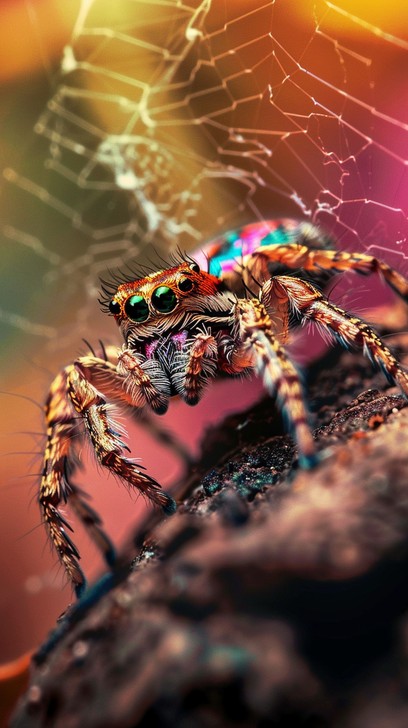
The “Itsy Bitsy Spider” is a classic finger-play that every mom can rely on for a burst of giggles and learning. Picture this: you’re in the kitchen prepping dinner, and your toddler is getting a bit restless. This is your moment! Gather your child and start the familiar tune. As your fingers mimic the spider climbing up the spout, watch your little one’s eyes light up with wonder. 🎶🕷️
Engaging in finger-plays like this offers more than just a few minutes of fun. It enhances your child’s fine motor skills and strengthens their memory through repetition. Plus, it’s a wonderful way to bond while sneaking in a mini lesson about persistence and overcoming obstacles, just like the determined spider.
- Start slowly, allowing your child to watch and imitate your movements.
- Encourage them to sing along, fostering language development.
- Repeat the song a few times, gradually increasing speed for an extra challenge.
By incorporating these playful moments throughout the day, you’re not only entertaining your child but also nurturing their growing mind. Remember, it’s these simple yet meaningful interactions that create cherished memories and a joyful learning environment.
2. Pat-a-Cake Playtime

Pat-a-Cake is more than just a nursery rhyme—it’s a delightful bonding activity that sparks giggles and motor skills development. Picture this: you’re in the kitchen, and your toddler is feeling a bit restless. It’s the perfect moment to introduce a playful round of Pat-a-Cake. This classic finger-play not only captivates their attention but also enhances hand-eye coordination.
From a mom’s perspective, the simplicity of Pat-a-Cake is its magic. I often find myself using it during diaper changes or when we’re waiting in line. Here’s how you can make it a fun learning experience:
- Start by clapping your hands together, singing the familiar tune.
- Encourage your little one to mimic the actions. This helps in developing rhythm and timing.
- As you “roll it” and “pat it,” guide their hands in the motions. This tactile interaction is both soothing and educational.
Beyond the joy it brings, Pat-a-Cake serves as a wonderful opportunity to introduce early language skills. The repetition of words and actions can aid in vocabulary building.
Remember, these little moments are the building blocks of your child’s development. Embrace the laughter and connection, knowing you’re laying a foundation for learning and love. Keep clapping, and watch those tiny hands flourish! 😊
3. Five Little Ducks Song

The “Five Little Ducks” song is more than just a catchy tune; it’s a fantastic way to bond with your little ones while sneaking in a bit of learning. Picture this: you’re in the kitchen preparing dinner, and your toddler is getting restless. A quick sing-along can transform the mood instantly. As you sing, use your fingers to represent the ducks, letting your child mimic your actions. It’s a delightful way to develop their fine motor skills and counting abilities.
Incorporating this song into your routine is simple. Try these steps:
- Set aside a few minutes each day to sing and play together. This consistency helps your child anticipate and look forward to this special time.
- Use props like rubber ducks or homemade cutouts to make the song more interactive and visually engaging.
- Encourage your child to take the lead as they become more familiar with the song, boosting their confidence and independence.
Beyond the fun, these sessions foster a deeper connection between you and your child. Watching their eyes light up as they grasp new concepts is incredibly rewarding. Plus, the repetitive nature of the song reinforces language development and memory skills.
Remember, these little moments are the building blocks of your child’s development. Embrace them wholeheartedly and watch your bond grow stronger each day. 🦆💕
4. Open Shut Them Game
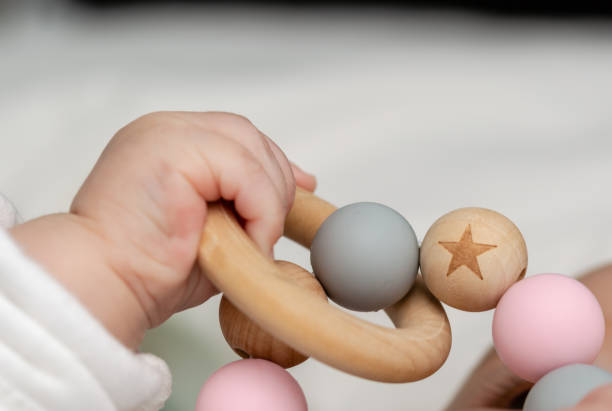
Finding activities that captivate a toddler’s attention can feel like striking gold. The “Open Shut Them” game is a wonderful way to engage little hands and minds, blending fun with learning effortlessly. As a mom of two energetic preschoolers, I’ve found this game to be a lifesaver during long car rides or waiting at the doctor’s office.
To play, simply start by singing the rhyme while demonstrating hand movements: open and close your hands in rhythm with the words. Encourage your child to mimic the actions. This game not only enhances fine motor skills but also introduces basic sequencing and rhythm. Plus, it’s a great opportunity to sneak in some language development as your little one listens to and learns new words.
- Start with slow, exaggerated movements to help your child catch on.
- Gradually increase the speed as they become more confident.
- Incorporate playful elements, like clapping or tapping on knees, to keep it exciting.
Joining in the fun allows you to bond and share giggles, creating lasting memories. The best part? You don’t need any props, so it’s perfect for spontaneous playtime.
Next time you’re searching for a quick, engaging activity, remember the simplicity and joy of “Open Shut Them.” It’s a small moment that brings big smiles. 🌟
5. Twinkle Twinkle Hands

One of the most cherished finger plays we’ve integrated into our daily routine is “Twinkle Twinkle Hands.” It’s a delightful spin on the classic “Twinkle, Twinkle, Little Star” that combines soothing hand movements with the beloved melody. When Sarah, a mom of two energetic toddlers, introduced this to her nighttime ritual, she noticed a calmer, more engaged bedtime routine 🌜.
To start, sit comfortably with your child and use gentle, flowing hand motions to mimic stars twinkling in the night sky. This not only enhances their motor skills but also strengthens their ability to follow along with rhythm and pattern recognition.
- Begin with hands open, fingers spread wide to simulate twinkling stars.
- Gently close and open your hands in sync with the tune’s rhythm.
- Encourage your child to mimic your motions, creating a synchronized bonding experience.
The benefits are two-fold: children develop fine motor skills and parents enjoy a peaceful, bonding moment. Plus, it’s a great way to wind down before bedtime.
Remember, the key is consistency and patience. This simple activity can transform your evening routine into a magical time, leaving both you and your child with twinkling smiles 😊.
6. Peekaboo Surprise Moments
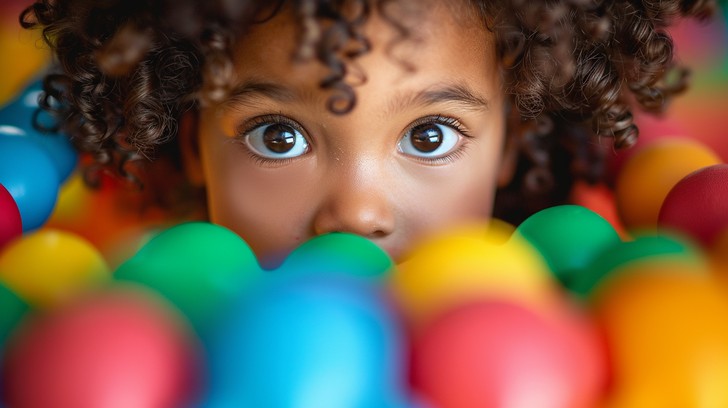
Few things light up a child’s face like a game of peekaboo! This timeless finger-play offers endless opportunities for laughter and surprise, making it a favorite for both toddlers and parents alike. One morning, while making breakfast, I found myself peeking over the counter with a kitchen towel, delighting my toddler as he giggled uncontrollably. These moments are precious and easy to create anywhere.
To make your peekaboo sessions more engaging, try incorporating different materials like napkins, scarves, or even your hands. Here’s a simple way to create a “Peekaboo Surprise Moment”:
- Hold a light cloth or scarf in front of your face.
- In a playful tone, say “Where’s mommy?”
- Quickly pull the cloth away, exclaiming “Peekaboo!” with a big smile.
- Watch your child’s eyes light up and repeat as desired! Feel free to switch roles for added fun.
Aside from the joy it brings, this game helps develop a child’s understanding of object permanence and boosts their social interaction skills. Plus, it’s a perfect break-time activity when you need a quick win during a busy day.
Remember, these simple interactions are building blocks for a joyful bond. Embrace these playful moments, knowing they are creating cherished memories and supporting your child’s development. 🎈
7. Row Row Movement

Transitioning into a finger-play that involves movement can be a delightful way to channel your toddler’s energy. The “Row Row Movement” offers an interactive experience that combines action with song, sparking joy and enhancing coordination. Imagine sitting on the floor, legs stretched out with your child opposite you, feet touching. As you both sing “Row, Row, Row Your Boat,” gently sway back and forth, mimicking rowing a boat. This simple motion not only strengthens your bond but also aids in developing your child’s motor skills.
One mom, Sarah, shares how this activity became a morning ritual with her daughter, Emily. “We’d start our day with giggles and rowing,” she says, “and it sets a positive tone for the rest of the day.”
- Sit facing each other, feet touching.
- Hold hands or use a colorful scarf for a fun twist.
- Sway back and forth in rhythm with the song.
- Enhances gross motor skills
- Encourages rhythm and timing
- Promotes joyful bonding moments
Remember, the goal is to have fun and enjoy each other’s company. Allow these moments to be spontaneous and filled with laughter. As you row together, cherish these small yet significant interactions that contribute to your child’s growth and your shared memories.💖
8. Wheels on Bus Action

When it comes to “Wheels on the Bus,” there’s something magical about combining song with movement. As a mom, Sarah found that her toddler, Lily, would light up with joy every time they sang this classic tune. By incorporating simple gestures like rolling hands for the wheels or bouncing up and down for the bus, it becomes a full-body experience that engages little ones completely.
To get started, try this approach:
- Play the song and encourage your child to follow your movements.
- Add props like a toy bus or draw a bus on paper to make it visually engaging.
- Encourage your child to come up with their own actions for different parts of the song, fostering creativity.
These interactive sessions not only improve motor skills but also enhance memory as children remember sequences of actions. Plus, it’s a great way for parents to bond with their kiddos. Singing together fosters a sense of connection and joy. 🎶
Ultimately, these moments of musical play lay the foundation for communication skills and emotional expression. So, let those wheels go round and round, and enjoy the ride together! 🌟
9. This Little Piggy Play

Embrace the classic charm of “This Little Piggy,” a delightful finger-play that brings giggles and bonding moments. Picture a cozy morning where you and your toddler are snuggled on the couch. As you start the rhyme, focus on each little toe, ending with a tickle that sends peals of laughter echoing through the room. This simple game is more than just fun—it’s a chance to nurture your child’s language development and understanding of sequencing.
Consider making this activity a part of your daily routine. Here’s a quick guide to enhance the experience:
- Gently hold each toe, starting with the big one, as you recite the rhyme.
- Use a cheerful tone and expressive facial expressions to engage your child.
- Finish with a gentle tickle, encouraging your child to laugh and interact.
The benefits are twofold: your child enjoys a playful learning moment while you relish in the joy of their laughter. It’s an excellent way to strengthen your bond while fostering their cognitive skills. 🧠💖
Remember, every giggle is a building block in your child’s development. So, keep those little piggies going to market and enjoy every precious moment! 🌟
10. Head Shoulders Knees Toes

One of the timeless favorites, “Head, Shoulders, Knees, and Toes,” is more than just a fun song—it’s a fantastic way for little ones to learn about their bodies while getting a bit of exercise. Singing this with your toddler can transform a mundane moment into a delightful learning experience. Picture a rainy afternoon when all seems a bit too quiet. This song can be your go-to for instant giggles and movement.
Here’s a simple way to incorporate it into your routine:
- Start by singing the song slowly, touching each body part as you go. Encourage your child to follow along.
- Repeat the song, gradually increasing the speed as they become more familiar with it.
- For an added challenge, switch up the order of body parts or sing it in a silly voice to keep things fresh and fun!
The benefits are plentiful: your child develops coordination and memory skills while you both share joyful bonding time. Plus, it’s a perfect energy burner when you can’t get outside!
Remember, every little wobble and giggle is a step toward growing confidence. Celebrate these moments and know that you’re creating cherished memories together. ❤️
11. Hokey Pokey Dance

Who doesn’t love a good dance that involves laughing, spinning, and some silly moves? The “Hokey Pokey Dance” is one of those timeless activities that can turn an ordinary afternoon into a giggle-fest. Imagine this: you and your little one, arms and legs going every which way, as you both try to remember which body part goes in and out. It’s a delightful chaos that’s both fun and educational. 💃🕺
A mom from Texas shares, “I use the Hokey Pokey to shake off the cranky pants on rainy days. It works wonders!” The dance encourages listening skills as children have to follow along to the instructions, which boosts their cognitive development.
- Start by playing the classic tune and demonstrate the moves.
- Guide your child through each step—don’t worry if they don’t get it right away.
- Encourage them to add their own flair; maybe a little spin or a jump! 🎶
Beyond the giggles, the Hokey Pokey helps toddlers and preschoolers develop coordination and rhythm. Plus, it’s a great way for parents to squeeze in some exercise while bonding with their child.
So, next time you need a pick-me-up, remember the Hokey Pokey. It’s a lively way to connect, learn, and create cherished memories with your little one. Keep those cozy dance moments coming! 🎉
12. Ring Around Rosie

“Ring Around the Rosie” is a timeless classic that brings smiles and giggles to little ones. This playful circle game is a fantastic way to engage toddlers and preschoolers in a rhythmic, joyful activity. As they hold hands and move in a circle, children develop a sense of rhythm and coordination. Real-life mom Sarah shares how her daughter, Lily, loves the surprise of ‘all fall down!’ at the end, often dissolving into fits of laughter. 😊
To make the most out of this game, try these steps:
- Gather a small group of children. The more, the merrier!
- Join hands in a circle and start singing the familiar tune.
- Encourage children to fall gently to the ground at the end, adding a fun element of surprise.
This simple activity is not only entertaining but also strengthens social bonds and encourages teamwork. Plus, it’s a great way for parents to join in and create lasting memories with their little ones.
Incorporating “Ring Around the Rosie” into playtime is sure to bring joy and connection. Remember, it’s the shared laughter and playful moments that build a strong foundation for your child’s social skills and emotional well-being. Keep spinning, and enjoy every delightful moment! 🌟
13. Baby Shark Moves

When it comes to finger-plays that get everyone moving, “Baby Shark Moves” is a real crowd-pleaser. Inspired by the catchy “Baby Shark” song, it combines simple actions with engaging fun. As a mom of a lively three-year-old, I found that this activity not only entertained my little one but also provided an outlet for his endless energy. 🦈
Here’s how to dive into it:
- Gather your toddler and some friends or family members in a spacious area.
- Play the “Baby Shark” song on a device. Encourage everyone to mimic the shark family moves—baby, mommy, daddy, grandma, and grandpa—with their hands and arms.
- Keep the energy high by adding your own twist, like jumping or clapping, to the rhythm of the song.
Besides burning off some extra energy, this activity enhances coordination and rhythm. It’s also a fantastic way for parents to bond with their children, sharing in the laughter and excitement.
So, next time you’re stuck indoors or need to shake off the post-nap grumps, let “Baby Shark Moves” bring a wave of joy to your day. Embrace the silliness, and watch your little one’s face light up with delight!
14. Five Little Monkeys Jump
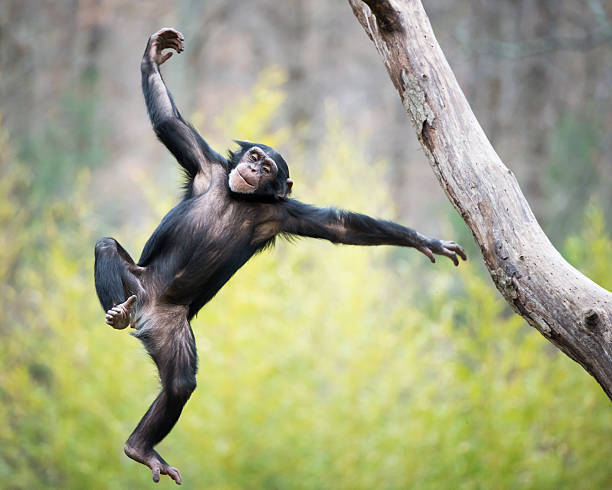
Jump into the delightful chaos of “Five Little Monkeys Jumping on the Bed” with your little ones and watch giggles ensue! This beloved finger-play isn’t just about fun—it’s a fantastic way to sneak in some learning. From counting to understanding consequences, this song offers a playful educational experience.
Picture this: A rainy afternoon, and Liz, a mom of three, is trying to keep her toddlers entertained. She sets up a makeshift bed on the living room floor using couch cushions. As they sing and act out the song, her kids not only practice their counting skills but also burn off some energy. Plus, it provides Liz a much-needed break as the kids immerse themselves in imaginative play. 🐵
- Gather some soft pillows or cushions to create a safe jumping area.
- Encourage your child to act out the song, counting down from five to one.
- Discuss with them why the monkeys should listen to the doctor’s advice.
Through this playful activity, children learn numbers, sequence, and the importance of listening to advice—all while having a blast! It’s a win-win for parents and children alike.
So, let the monkeys jump, and enjoy the laughter and learning that fill the room. Remember, these are the moments that create cherished memories. Keep jumping, singing, and most importantly, smiling! 😊
15. Popcorn Popping Hands

Imagine the delight in your toddler’s eyes as they watch their hands transform into popping popcorn! Engaging in “Popcorn Popping Hands” is not just a fun finger-play but a wonderful way to nurture your child’s imagination and fine motor skills. With a simple rhyme and synchronized movements, this activity is a hit during playtime.
As a mom, I found this finger-play to be a lifesaver during grocery store lines or car rides. The rhythmic clapping and opening of hands keep little ones captivated, and the giggles are endless. Here’s how to do it:
- Recite the rhyme, “Popcorn popping in the pan, clap your hands, make it grand!”
- Clap your hands together to mimic popcorn popping.
- Open your hands wide like an exploding kernel.
- Repeat with variations in speed for added excitement.
Not only does this finger-play foster creativity, but it also enhances hand-eye coordination and listening skills. Plus, it provides a bonding opportunity that strengthens your connection.
Embrace the magic of simple play and cherish these giggle-filled moments. These small activities can spark joy and learning in your everyday routine. 🍿✨
16. London Bridge Fun
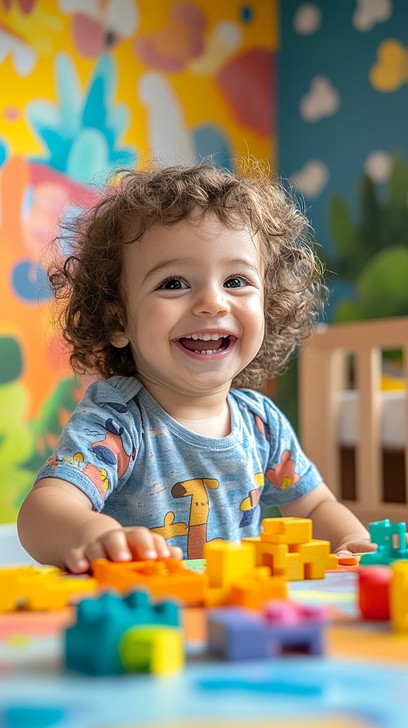
Engaging in “London Bridge Fun” with your child is not only a delightful way to spend time together, but it also offers numerous developmental benefits. From my own experience, this classic finger-play never fails to bring smiles and giggles. Picture this: my toddler and I form a bridge with our arms, singing the familiar tune while my preschooler gleefully runs under. It’s a moment of pure joy and connection. 🎶
Here’s how you can make the most of this activity:
- Invite your child to join you in forming a bridge with your arms.
- Encourage them to sing along as they pass underneath, enhancing language skills.
- Take turns being the bridge and the traveler to practice patience and taking turns.
The benefits extend beyond fun. Your little one exercises gross motor skills while navigating the bridge and develops social skills through shared play. Plus, the repetitive nature of the song supports memory and rhythm. 🎵
Remember, these simple yet effective plays create lasting memories and important developmental strides. Embrace the laughter and learning, knowing you’re crafting beautiful moments together.
17. Clap Your Hands Together

Clapping hands is not just a simple action; it’s a delightful way to connect with your toddler and encourage their motor skills. Imagine a rainy afternoon where little Noah, full of energy, is getting restless. His mom, Sarah, sits him down and starts clapping her hands, singing “If You’re Happy and You Know It.” Instantly, Noah joins in, his little hands mimicking the rhythm with giggles in between. This moment of shared joy not only entertains but helps develop his coordination skills.
To get the most out of this finger-play, try these steps:
- Start with slow, exaggerated claps to help your child follow along.
- Incorporate familiar songs or create your own clapping rhythm.
- Encourage your child to add their own twist, like stomping feet or nodding heads.
These activities are beneficial for both you and your child. For children, it boosts motor skills and rhythmic awareness. For parents, it’s a wonderful bonding experience that requires no special equipment—just your hands and a willingness to have fun!
Engage with your child in this playful way, and you’ll be building memories and skills that will last a lifetime. 💖
18. Baa Baa Black Sheep

Engaging your little one with “Baa Baa Black Sheep” can be a delightful experience. Picture this: it’s a rainy afternoon, and you and your toddler are snuggled up together. As you sing the classic rhyme, your child’s eyes light up with each familiar line. This finger-play not only entertains but also helps in developing language skills and rhythm recognition.
To make it more interactive, consider using props. A small stuffed sheep or a bag representing the wool can enhance the experience. You might say, “Let’s count the bags of wool together!” and watch your toddler’s counting skills blossom. This simple activity combines learning with play, offering a perfect opportunity to bond.
- Start with a gentle melody, encouraging your child to mimic the words.
- Use hand gestures to represent the sheep and the bags of wool, adding a visual element.
- Incorporate counting by holding up fingers as you mention the bags.
By actively participating, your child gains confidence and enhances their listening abilities. Plus, these shared moments create lasting memories. Embrace the joy of learning and laughter, knowing you’re fostering your child’s development in a fun, loving environment. 🌟
19. Old MacDonald Animals

One of the most delightful ways to engage your toddler in learning about animals is through the classic “Old MacDonald” finger-play. This activity combines music, movement, and imagination, making it an all-time favorite for both kids and parents. Picture this: you’re sitting in the living room, and your little one is giggling as you both mimic the sounds of cows, ducks, and pigs. It’s a joyful cacophony that not only entertains but also educates. 🎶
From a mom’s perspective, this finger-play is a lifesaver during long car rides or waiting room visits. You can start by choosing a few farm animals and using your fingers to represent each one. Encourage your child to join in, helping them to develop their fine motor skills while also boosting their vocabulary.
- Start with a familiar animal, like a cow, and ask your child what sound it makes.
- Use your fingers to mimic the animal (e.g., two fingers for bunny ears).
- Encourage your toddler to copy your actions, enhancing their motor coordination.
- Mix it up by adding new animals or even mythical creatures for a fun twist! 🦄
Parents benefit from this interactive play by enjoying quality bonding time and witnessing their child’s language skills blossom. Plus, it’s a perfect opportunity to ignite their imagination by asking, “What other animals do you think Old MacDonald has on his farm?”
Embrace the sounds and silliness of “Old MacDonald” to create cherished memories and cultivate a love for learning. With each “moo” and “quack,” you’re nurturing creativity and joy in your little one’s world. Keep up the great work, mama! 🌟
20. Where Is Thumbkin?
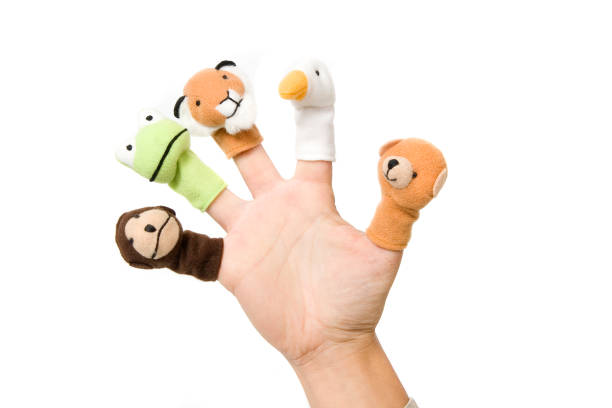
“Where Is Thumbkin?” is a classic finger-play that delights toddlers and preschoolers, offering a playful way to learn about finger names and develop fine motor skills. Imagine this: You’re waiting at a doctor’s office, and your little one is getting antsy. You start singing “Where Is Thumbkin?” and watch as their tiny fingers spring into action, mimicking yours. Instantly, their mood shifts, and the waiting room giggles are contagious! 🎵
To make the most of this finger-play, try using it during transitions, like getting ready for nap time or waiting for meals. Follow these simple steps:
- Start by singing the song slowly, showing each finger as you go.
- Encourage your child to copy your actions, helping them learn the finger names.
- Gradually speed up the tempo for added fun and engagement.
Beyond being a fun activity, “Where Is Thumbkin?” helps children improve their hand-eye coordination and listening skills. Plus, as you sing together, you’re building cherished memories and a sense of rhythm in your child.
Remember, the goal is enjoyment and connection. Each giggle and smile strengthens your bond, making these simple moments so meaningful. 🌟
21. Teddy Bear Turn Around
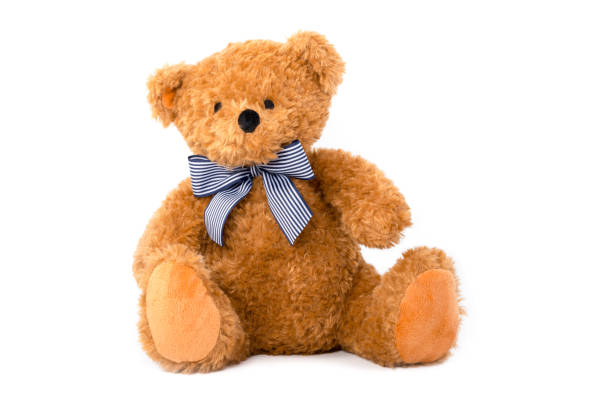
“Teddy Bear, Teddy Bear, turn around,” is a delightful finger-play that brings giggles and joy to any playtime session. As a mom, I’ve found this activity to be the perfect mix of movement and fun for my little ones. Not only does it encourage physical activity, but it also aids in developing listening skills and following directions. 🐻
Here’s how you can enjoy this classic finger-play with your toddler:
- Start by reciting the rhyme together, emphasizing each action word.
- Encourage your child to mimic the movements, such as turning around, touching the ground, and clapping their hands.
- Join them in the fun! Your engagement boosts their excitement and encourages participation.
One real-life example: my son loves to add his own spin, like jumping instead of turning. Letting them improvise keeps the activity fresh and encourages creativity. 💡
Beyond fun, this finger-play supports motor skill development and provides a bonding moment. It’s a simple yet effective way to nurture your child’s growth while creating cherished memories. Remember, the goal is to enjoy the moment together. 🎉
Takeaway: Embrace the silliness and let your inner child shine—it’s these playful interactions that build strong, happy connections. 🌟
As we wrap up this delightful journey through 21 fun and favorite finger-plays for toddlers and preschoolers, let’s revisit the key highlights that promise to spark joy and learning in your little one’s day. From the classic “Itsy Bitsy Spider” to the imaginative “Five Little Ducks,” each finger-play is a magical blend of rhythm, movement, and creativity that fosters developmental growth while creating cherished memories. These playful activities not only encourage fine motor skills but also enhance language development and social interaction.
Remember, every moment spent engaging in these finger-plays is an investment in your child’s growth and happiness. Whether you’re a parent, teacher, or caregiver, you have the power to create a world of wonder and learning right at your fingertips. So, why not make these moments a regular part of your routine?
Before you go, make sure to save this article to your favorite Pinterest board. It’s a handy resource you’ll want to revisit whenever you need a burst of inspiration or a quick giggle with your little one.
Embrace the joy of learning through play, and watch as your child’s imagination and confidence blossom. Pin this treasure trove of fun today, and let the magic of finger-plays fill your days with laughter and love!

Hi, I’m Sarah West, the voice behind She Is a Good Mommy and a proud mom of two. Through this blog and my Pinterest community (@SheIsAGoodMommy), I share practical parenting hacks, fun toddler activities, and tips for balancing motherhood with self-care.
Parenting isn’t easy, but with positivity, patience, and practical strategies, it can be incredibly fulfilling. My goal is to support fellow moms with ideas and encouragement while reminding you to prioritize your well-being—you deserve it, Mama!

